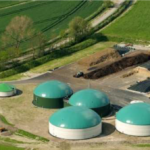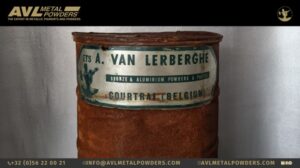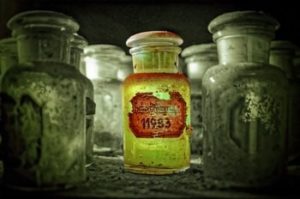There are not a lot of companies that reach 25 years, not to mention 125 years. For Bruchsaler Farbenfabrik GmbH & Co. KG, celebrating its 125th anniversary means a time to look back on its traditions and successes while looking ahead to new challenges and opportunities.
Ron Levi, owner of Bruchsaler Farbenfabrik GmbH & Co KG as well as New Brook International, spoke about the company’s heritage as he reflected on its 125th anniversary. He noted that the company was founded in 1896 as Lack- und Farbengroßhandlung Gebrüder Katzauer by brothers Samuel and Meier Katzauer. The company started as a lacquer and paint wholesaler, producing paints and brushes for local craftsmen. Soon after, the company began manufacturing window putty and various lime-based products.
At the beginning of the 20th century, the Katzauer family acquired a 20-acre site on the outskirts of Bruchsal, which still serves as the company’s headquarters.
“Here, the foundation was laid for the chemical production of pigments, which continues to be the most important focus of the company,” said Levi. “During the early 20th century, new production halls were built, enabling the chemical production of chromate pigments, organic and iron cyanide pigments, making Bruchsaler Farbenfabrik an important and modern international manufacturer of these colors.”
World War II was a turning point, as ownership of the company was taken by Rheinchemie, the government’s chemical group and part of a larger conglomerate, IG Farben. Pigment production was stopped in favor of the manufacture of camouflage paints and rubber compounds during this time.
“The continued growth and success story was abruptly interrupted in 1938 when the Katzauer and Levi families were forced to flee Germany and the company was incorporated into Rheinchemie, a part of IG Farben,” Levi said. “Fortunately, the Levi family was able to emigrate to the USA and later regained rightful ownership (first Ludwig and then Peter) of the company in 1949.”
After the second World War, pigment production was renewed, and the facilities completely rebuilt into one of the most modern inorganic pigment production sites in the world from 1957-1998 under Peter Levi. In 1998, upon the death of Peter Levi, ownership passed to the fourth generation, with Ronald Levi taking charge.
The plant had been gutted during the war, so new buildings and technologies were introduced. Even today, legacy wooden tanks and pan mills can still be found around the factory and continue to operate. Modernization of plant and equipment, as well as new technologies that meet the stricter health and safety requirements, continued over the years.
In 2006, a new building housing a modern chemical production was commissioned. In 2015, further growth occurred when the new mixing facility went online with a custom designed and built mixer capable of grinding dry pigment blends up to 9 cubic meters per homogeneous batch.
“Key markets have always been the protective coatings, plastics and ink applications,” said Levi. “The wide range of high quality inorganic offerings, blends and the willingness to produce customer specific colors have been the differentiators.
“After having been a leader in the development of chrome yellow and molybdate pigments, the focus has moved to bismuth vanadate and dry pigment blends,” Levi added. “Work continues on further stabilizing and shading of the BV molecule and in the orange color space.”
Levi said that there have been quite a few highlights over the years, including continued global growth, opening markets in more than 100 countries, and consistency of service through two pandemics, two world wars and the ever-changing environmental landscape. He anticipates further successes in the future.
“The outlook is positive for this mid-sized, flexible producer of high quality inorganic pigments even in the face of continuing legislative and environmental twists and turns,” Levi concluded.



